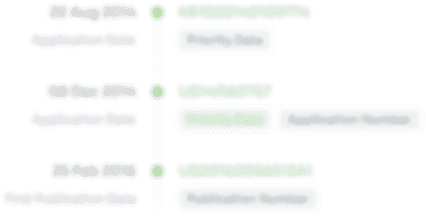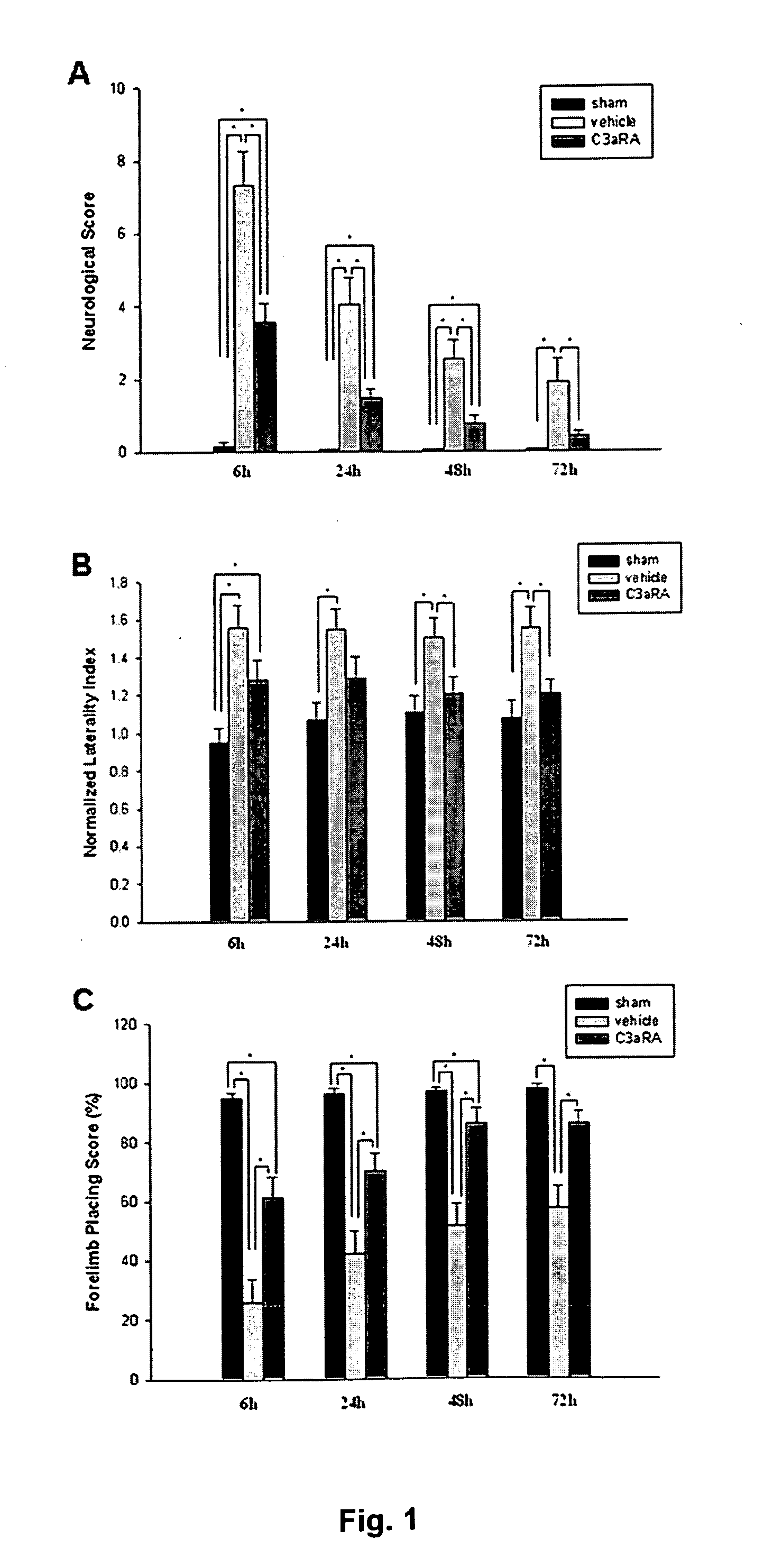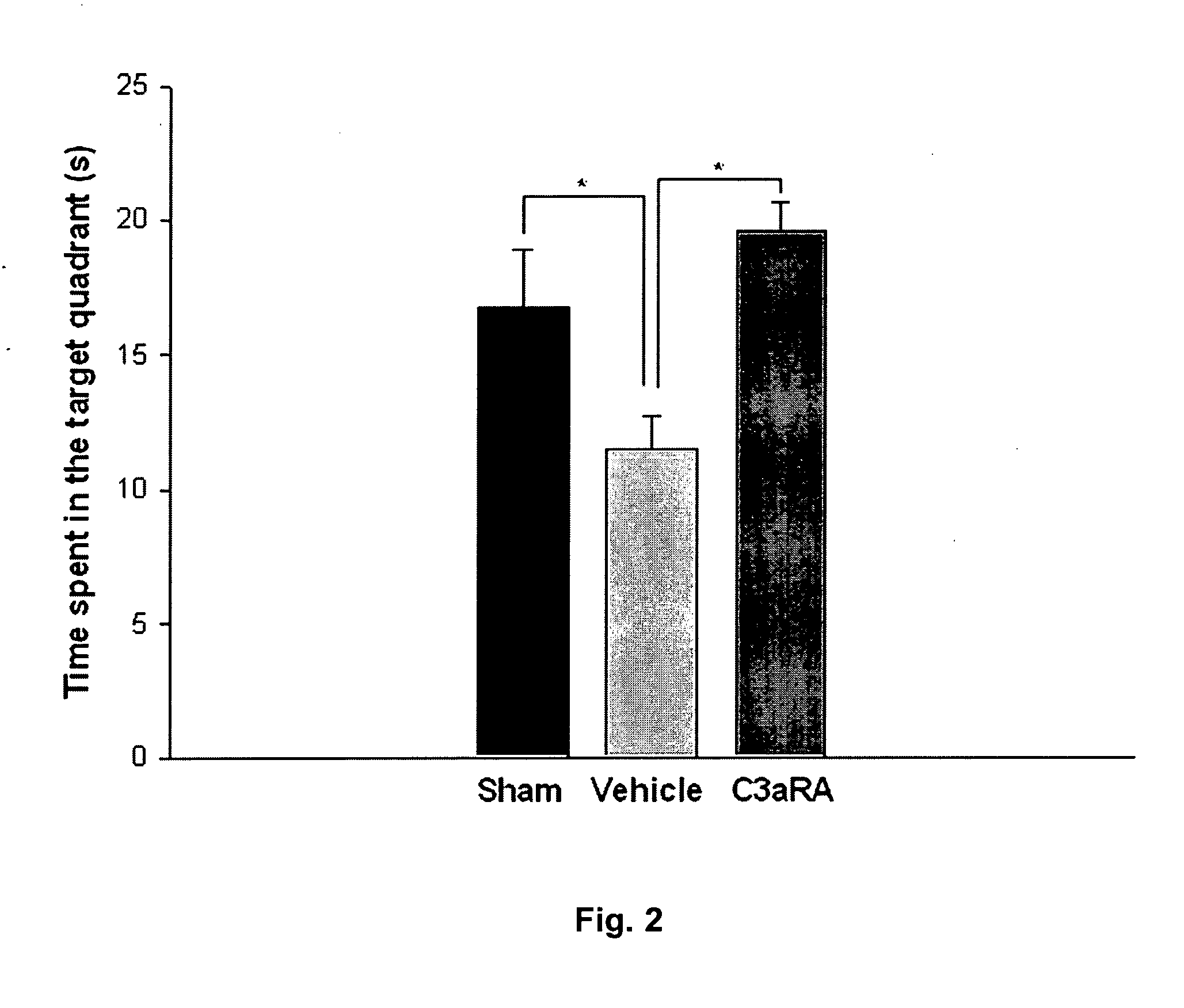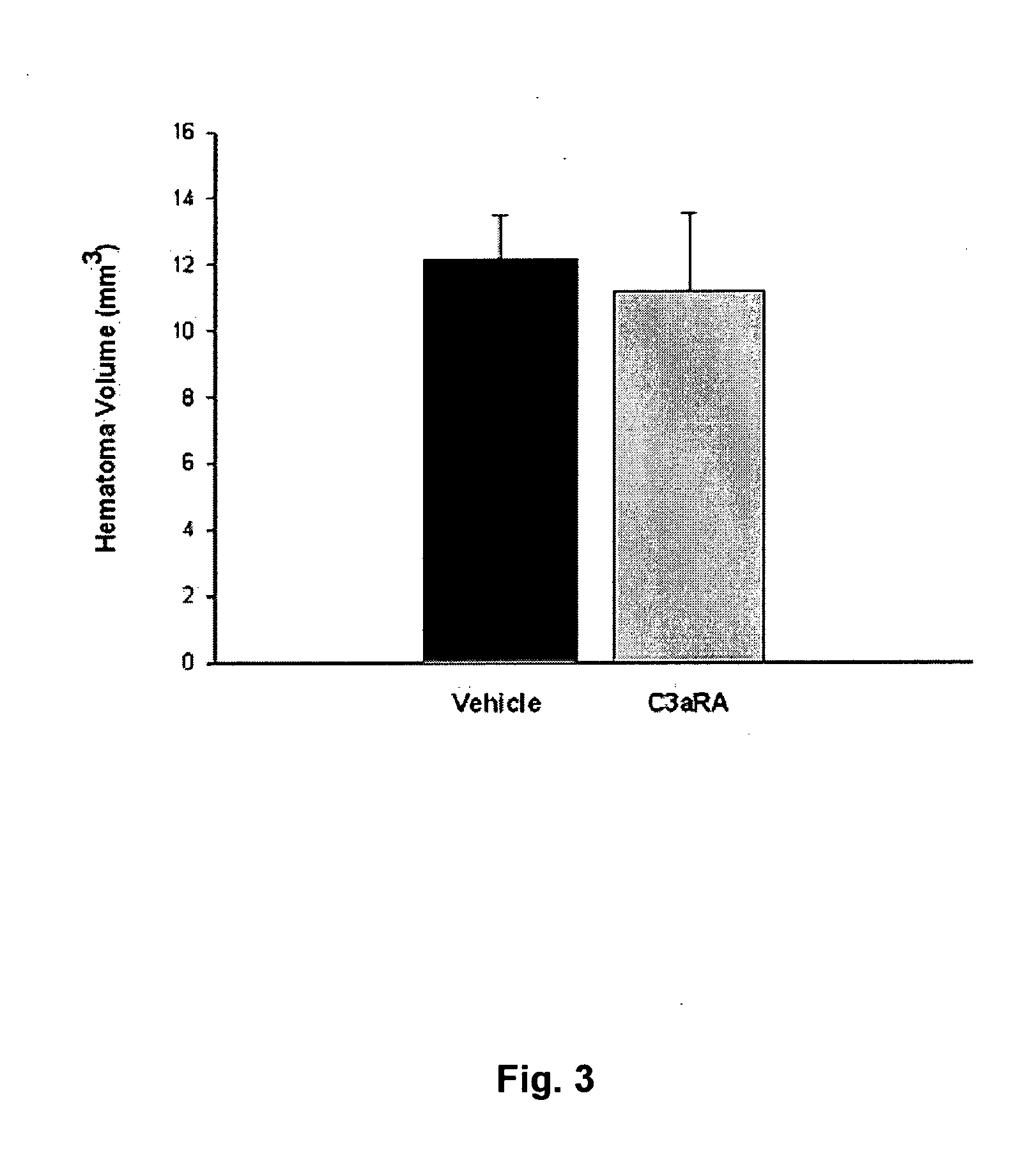Complement Inhibitors For Treatment Of Injury From Intracerebral Hemorrhage
a technology of complement inhibitors and intracerebral hemorrhage, which is applied in the field of neurological injury and treatment, can solve the problems of conflicting inhibitory attempts and limited available therapies, and achieve the effects of treating or preventing injury, reducing or preventing the formation or activity of c3a or c5a, and preventing the injury resulting from injury
- Summary
- Abstract
- Description
- Claims
- Application Information
AI Technical Summary
Benefits of technology
Problems solved by technology
Method used
Image
Examples
example 1
[0082]This example describes an investigation of the role of C3a receptor blockade on ICH-induced brain injury using analyses of brain edema formation, leukocyte infiltration, microglial activation as well as neurological outcome following experimental ICH.
[0083]Materials and Methods:
[0084]Animal Preparation and Intracerebral Infusion. Adult male C57BL / 6J mice weighing 23-30 g were used. Mice were randomized to receive intraperitoneal injection of either C3aRA (1 mg / kg) (SB290157, Calbiochem, Darmstadt, Germany) diluted in PBS and DMSO (1.16% v / v), or an equal volume of vehicle (PBS and DMSO, 1.16% DMSO v / v) either 45 minutes prior to ICH induction or 6 and 12 hours after induction of ICH, followed in both cohorts by twice daily doses for 72 hours. The most effective dose of C3aRA (1 mg / kg) was determined in a dose-response trial comparing 0.1 mg / kg, 0.5 mg / kg, 1 mg / kg, 5 mg / kg in a model of focal ischemic stroke. Sham animals were given PBS and DMSO (1.16% v / v) in the same manner.
[...
example 2
[0106]This example describes further investigation of the role of C3a and C5a in intracerebral hemorrhage. C3a and C5a function was blocked by administering C3a and C5a receptor antagonists both solely and in combination six hours after induced hemorrhage and the outcomes were compared to vehicle-treated controls.
[0107]Materials and Methods:
[0108]Animal Preparation and Intracerebral Infusion. Adult male C57BL / 6J mice weighing 23-30 g were randomized to receive intraperitoneal injection of either C3aRA (1 mg / kg) (SB290157, Calbiochem, Darmstadt, Germany), C5aRA(1 mg / kg), combined C3aRA and C5aRA or an equal volume of DMSO. Each drug was diluted in PBS (1.16% v / v) and given 6 and 12 hours after ICH induction, followed by twice daily doses for 72 hours. The sham group of animals was given PBS and DMSO (1.16% v / v) in the same manner. Mice were anesthetized with a single intraperitoneal dose of ketamine (90 mg / kg) and xylazine (5 mg / kg). Next, the mice were placed in a stereotactic frame...
PUM
| Property | Measurement | Unit |
|---|---|---|
| Composition | aaaaa | aaaaa |
Abstract
Description
Claims
Application Information
 Login to View More
Login to View More - R&D
- Intellectual Property
- Life Sciences
- Materials
- Tech Scout
- Unparalleled Data Quality
- Higher Quality Content
- 60% Fewer Hallucinations
Browse by: Latest US Patents, China's latest patents, Technical Efficacy Thesaurus, Application Domain, Technology Topic, Popular Technical Reports.
© 2025 PatSnap. All rights reserved.Legal|Privacy policy|Modern Slavery Act Transparency Statement|Sitemap|About US| Contact US: help@patsnap.com



